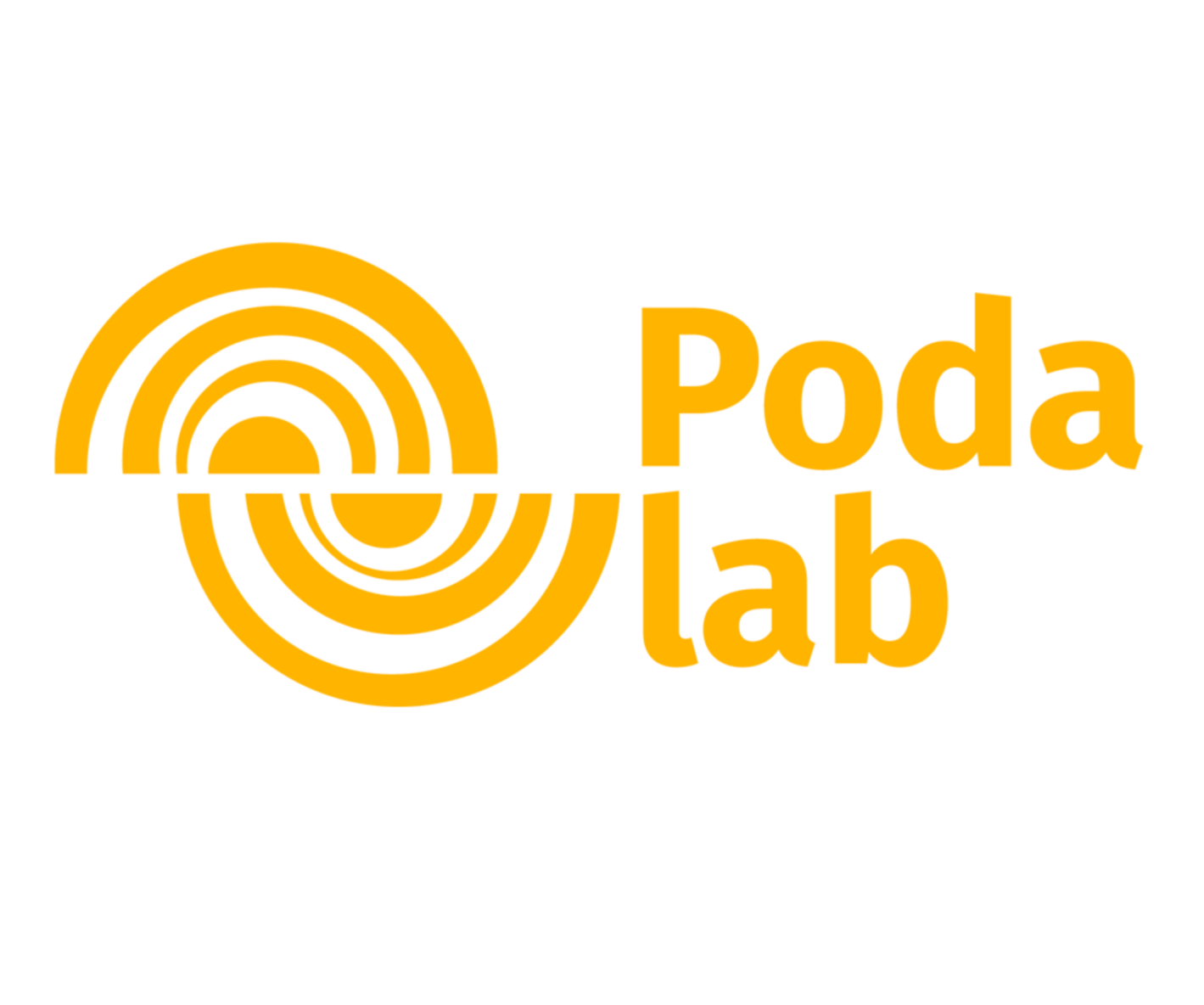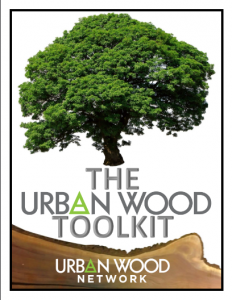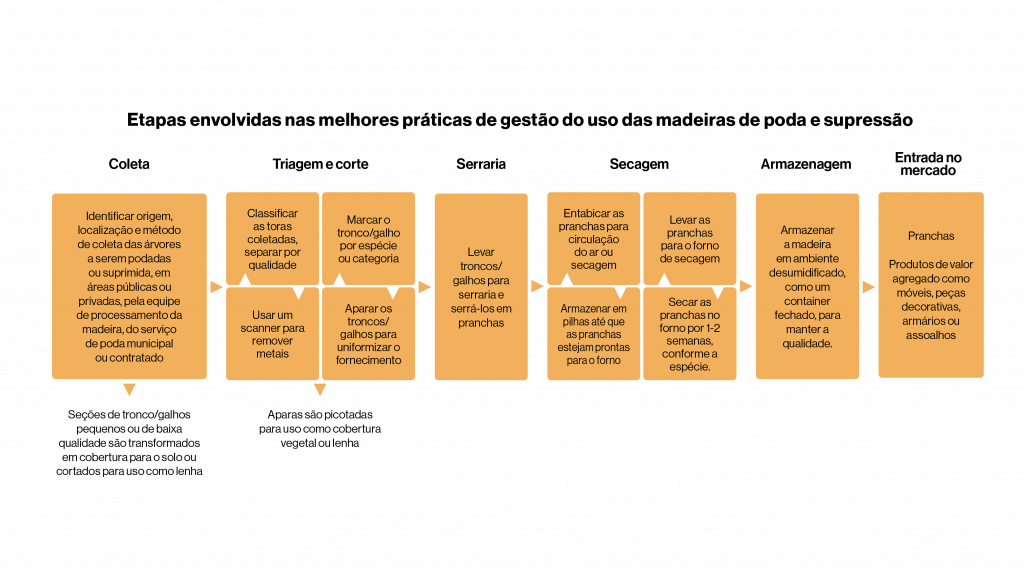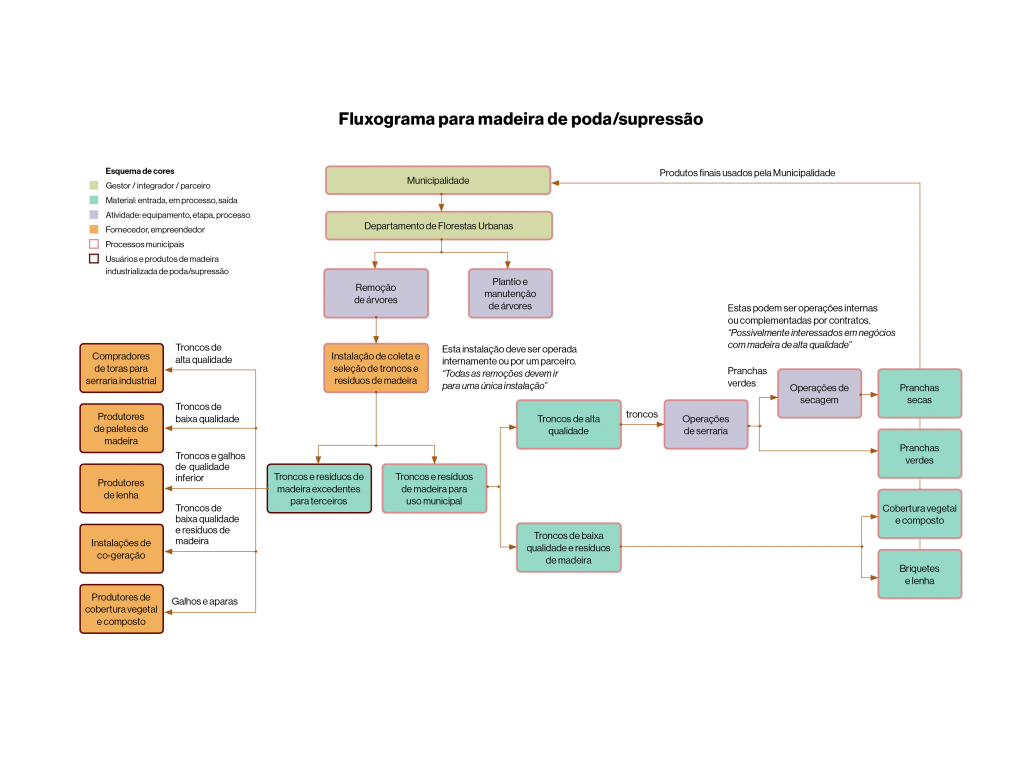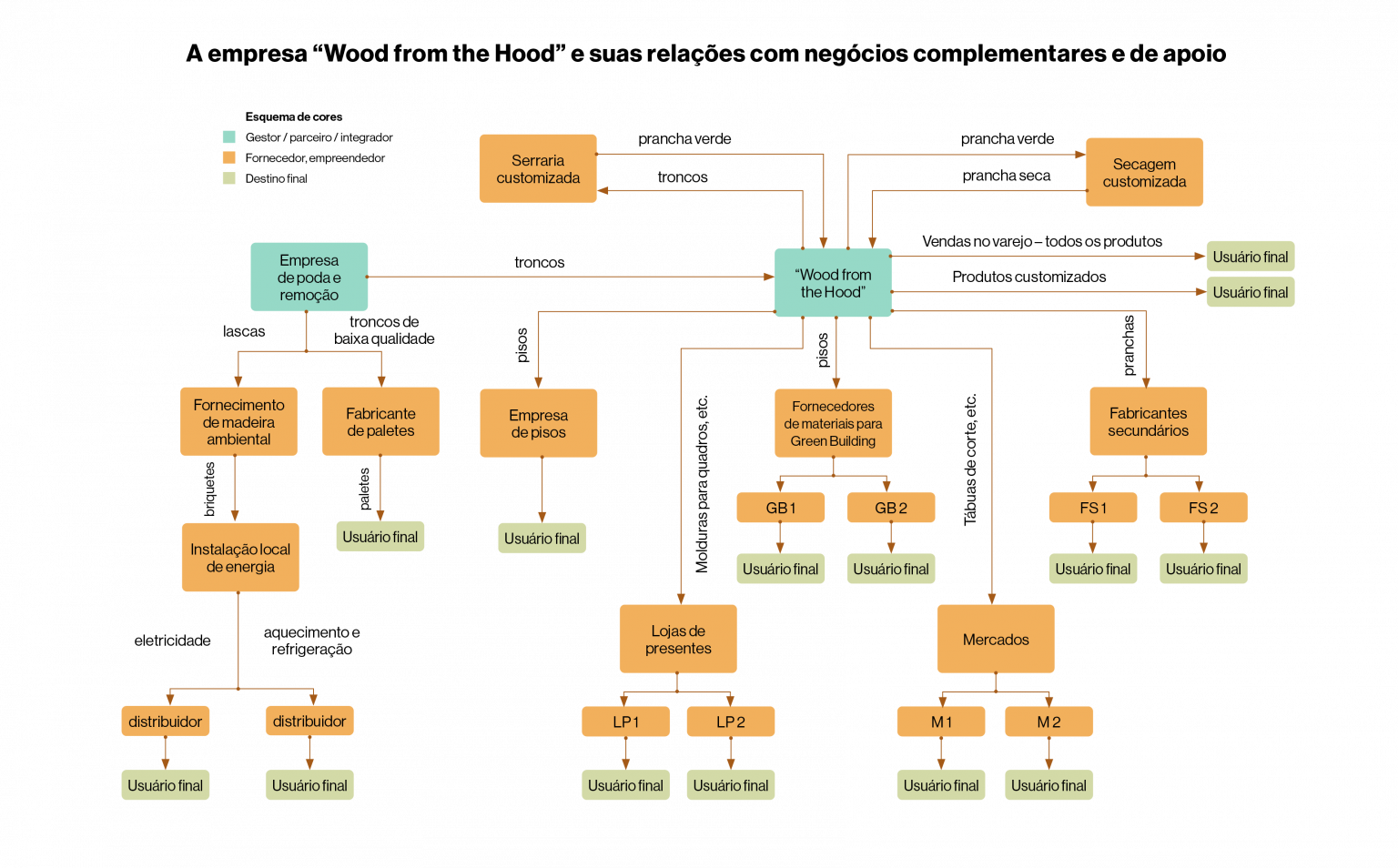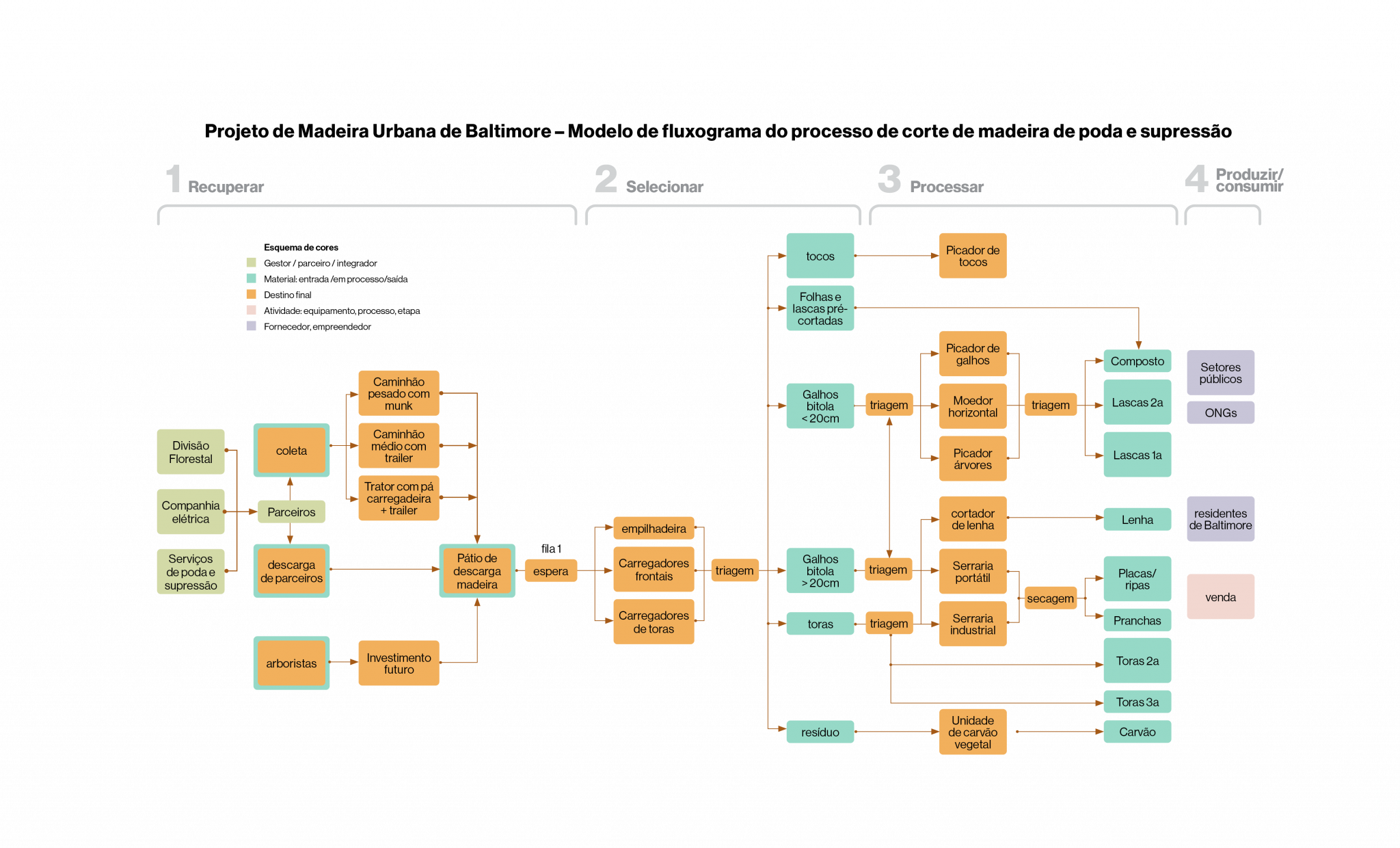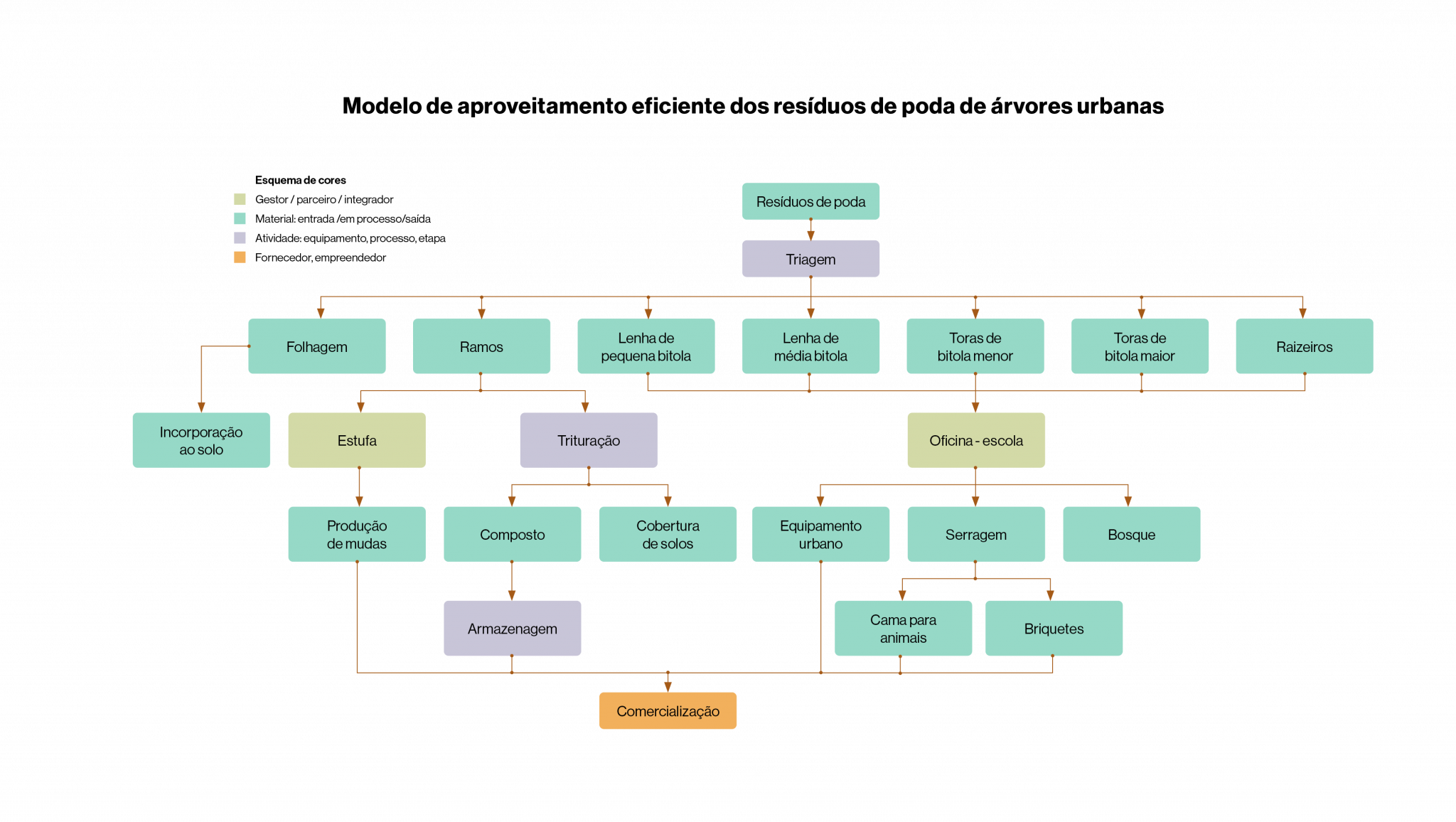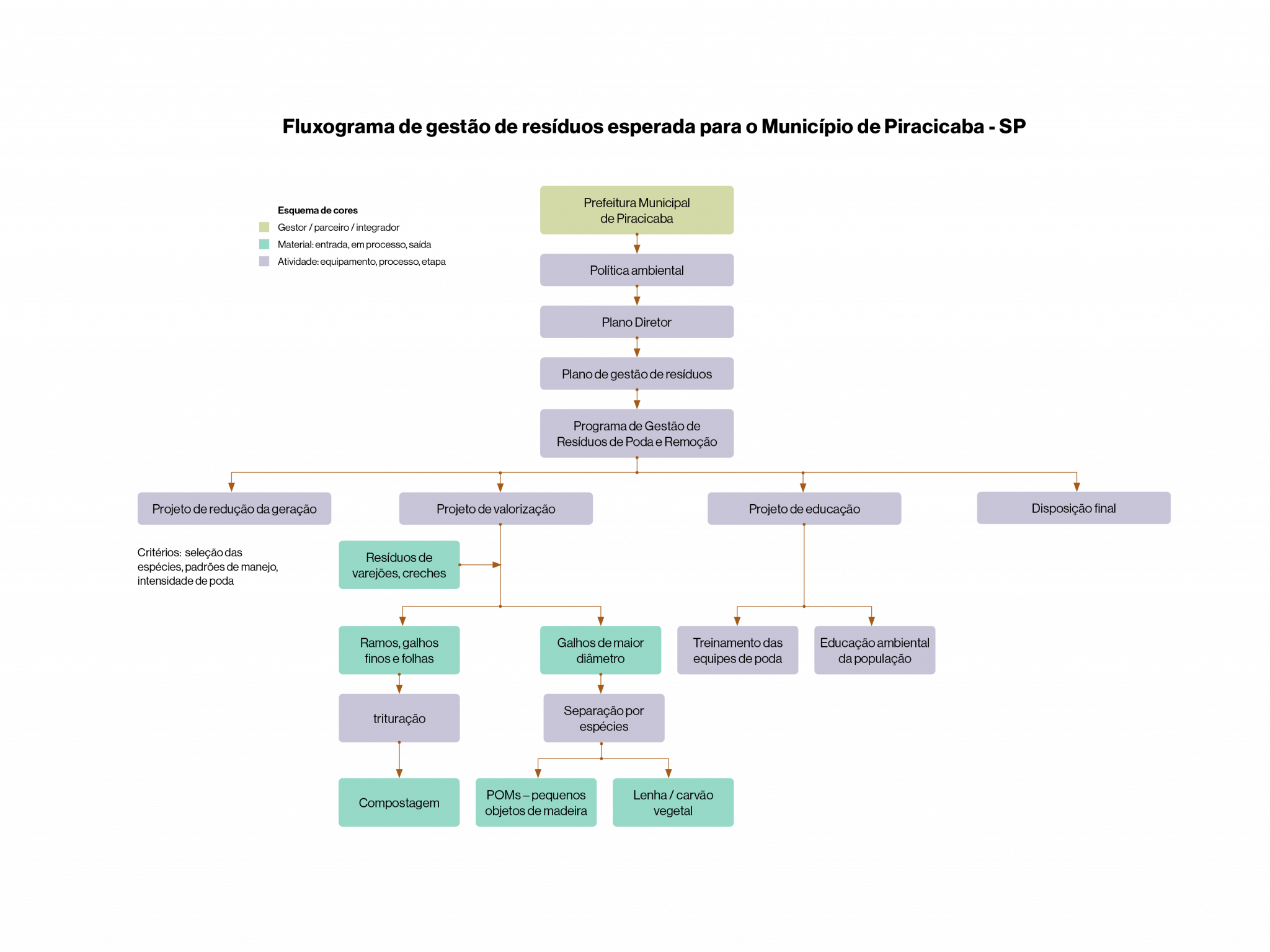Tree Management
What is sustainable management?
Sustainable management encompasses a set of techniques used to capture natural resources without damaging the environment, ensuring the continuation and renewal of these resources, allowing their constant, efficient and durable use, taking into account environmental, social and economic aspects.
Without disregarding that, in the case of urban afforestation, management involves numerous activities from the planning and choice of the most appropriate species for each location, and that the management of the first impacts all the subsequent ones, PodaLab’s performance is directed to the set of activities related at the end of the cycle. Our central focus starts from the management and implementation of tree pruning and suppression activities and goes to the final destination of the resulting residues.
Our journey started with the question “Could some of the wood from pruning and suppression of urban trees not be transformed into useful objects and components?” and the fundamentals of the circular economy. We see these wastes as resources, to which values can be added and retained, with the adoption of production models that do not deplete natural resources and reduce environmental pollution, in order to contribute to the preservation of our planet.
The two flowcharts below illustrate basic initial procedures to be adopted in planning pruning and suppression activities, which consists of periodic monitoring of the health of the urban forest, which can significantly contribute to avoiding various accidents and consequences resulting from falling trees, especially in the rainy season.
Risk monitoring of healthy trees - assessment and procedures
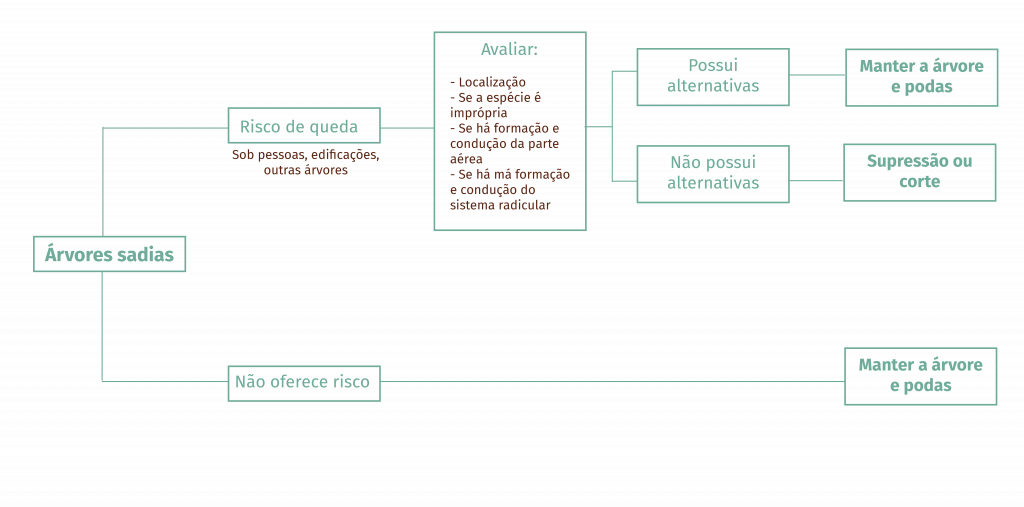
Risk monitoring of diseased trees - assessment and procedures
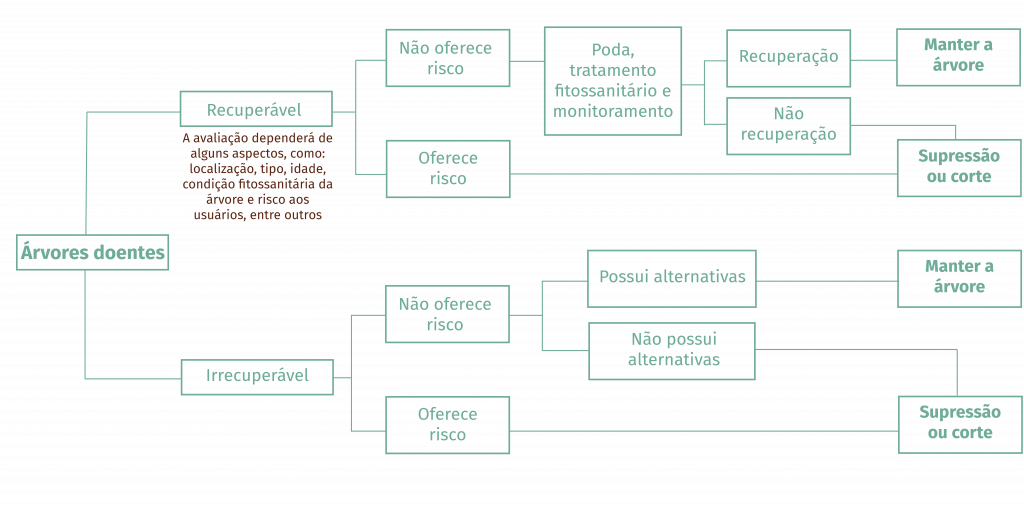
The urban wood toolkit planning guide
People who manage urban forests or work in timber may find it difficult to connect with partners and learn about opportunities in the emerging market for urban forest products. In this regard, the Urban Wood Network works to connect people along the entire supply chain in order to build trust among the community, businesses and consumers in urban wood. This guide is divided into seven sections, which help you gather information that prioritizes the most important goals and objectives for your community’s timber, as well as recognize the types of information or resources you need to move forward and identify the types of services you need. of additional partners.
Find your baseline: where does waste go right after being cut? Do you already produce something with this wood?
Group information: How much money is spent (including transportation, equipment, etc.)? How much time do employees spend? How much wood is taken?
Evaluate opportunities: are you satisfied with the current situation of your wood disposal? What wood products does your community use the most? What is your main objective? Sustainability? Economy? What are your biggest concerns?
Find your baseline: is there any work like this in the community already? How it is? What is the frequency of pruning?
Group information: what is the quality of the wood removed? What are the species and their characteristics?
Assess opportunities: is there good enough wood for the production of high value-added objects?
Find your baseline: are there private companies operating? What kind of training do employees receive? What equipment do you own? Are there suitable areas for wood storage?
Gather information: what skills do employees need to improve? Are there any municipal regulations that may interfere with the process?
Evaluate opportunities: how to train employees? Are there resources for purchasing equipment?
Find your baseline: how does the community handle this type of process? What procedures must be done to make partnerships happen? Is there already some kind of municipal urban timber management?
Gather information: do you need any extra financial resources? Build a list of the agreements, documentation or plans you will need to draft and identify templates for any you still need to draft.
Assess opportunities: What assessment and communication measures will you use to track progress toward goals, report on your results, and continue to build support?
Find your baseline: what wood products are staples in the community? Can these products be made with available woods?
Group information: Is there a need for a product by the community?
Evaluate Opportunities: How will you track results and measure progress as you try new processing options? Does your plan involve the best uses for each wood? Are your goals realistic?
Find your baseline: Will outside help be needed? Will your production be greater than the community’s demand? What services would you need a partnership with?
Gather information: research local timber industry members, keep in mind what to ask them.
Evaluate opportunities: do the companies surveyed meet my needs?
Find your baseline: What benefits of using urban wood does the community enjoy most? Does the community care about benefits to the environment?
Gather information: is there any kind of dissemination of this type of information by the media? Who could be an ally in local organizations?
Evaluate opportunities: how to keep the program alive over time?
Models of pruning and suppression waste management systems
For the success of initiatives aimed at the management of these residues, the qualification and integration of all the actors involved in the local recovery chain is essential. This chain must be organized based on the analysis of the existing context of supply and demand for materials, components and products, as well as the necessary and feasible skills and infrastructure. Some models of management systems in the country and abroad can help in this process:
Adapted from Wood utilization best management practices, Chicago, IL: Delta Institute, 2014. p. 2-3. Available at: <http://www.ncforestservice.gov/Urban/pdf/CommunityUrban-Wood-BMP.pdf>
Adapted from Urban Wood Network, “The urban wood toolkit”. p. 18. Available at: <https://urbanwoodnetwork.org/wp-content/uploads/2019/01/The-Urban-Wood-Toolkit.pdf>
Adapted from BRATKOVICH, Steve & FERNHOLZ, Kathryn. Using industrial clusters to build an urban wood utilization program: a twin cities case study. Minneapolis, MN: Dovetail Partners, 2010. p. 59. Available at: <https://www.dovetailinc.org/report_pdfs/2010/werc63010finalreportsm.pdf>
Adapted from Fresh Cut – The Business Viability of Processing Freshly Cut Urban Wood in Baltimore City. Washington, DC: Quantified Ventures, 2019. p. 59. Available at: <http://baltimorewoodproject.org/pdf/FreshCut_BaltimoreUrbanWood_v3_2019.05.14.pdf>
Adapted from ALVES, Barbara Lucia Guimarães. Gestão de resíduos de poda: estudo de caso da Fundação Parques e Jardins do Município do Rio de Janeiro. (Dissertação de mestrado). Rio de Janeiro: UERJ, 2007. p. 113. Available at: <https://www.bdtd.uerj.br:8443/handle/1/10971>
Adapted from MEIRA, Ana Maria de. Gestão de resíduos da arborização urbana (Tese de doutorado). Piracicaba: ESALQ-USP, 2010. p. 134 e 140. Available at: <https://teses.usp.br/teses/disponiveis/11/11150/tde-19042010-103157/pt-br.php>
